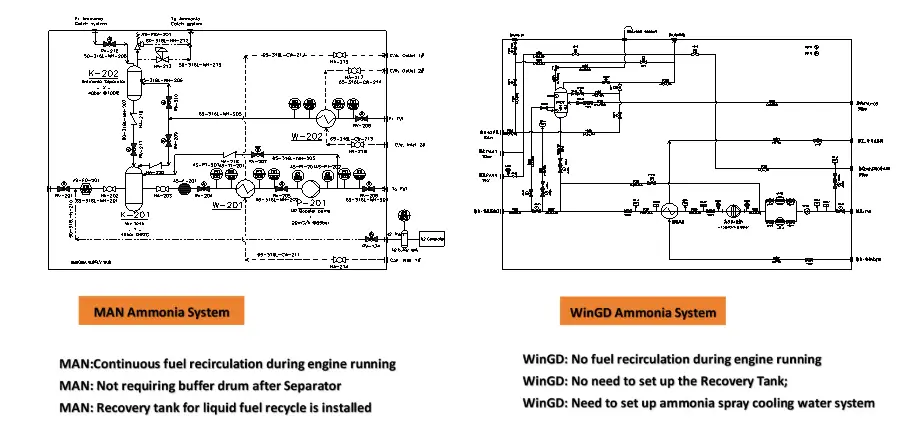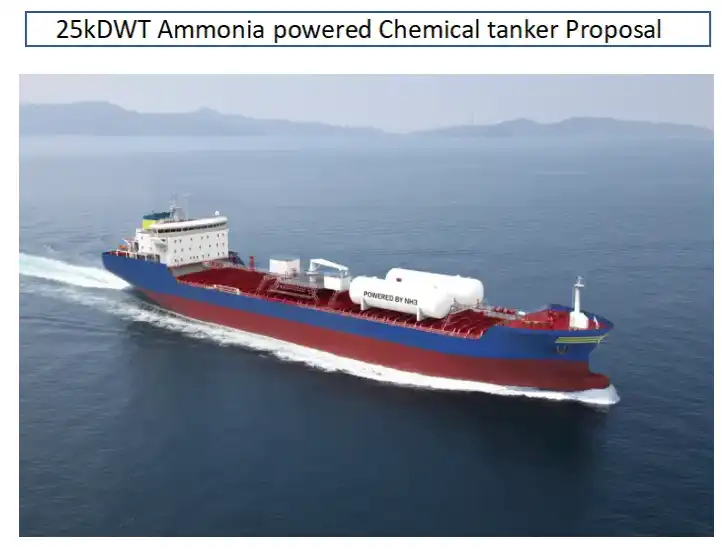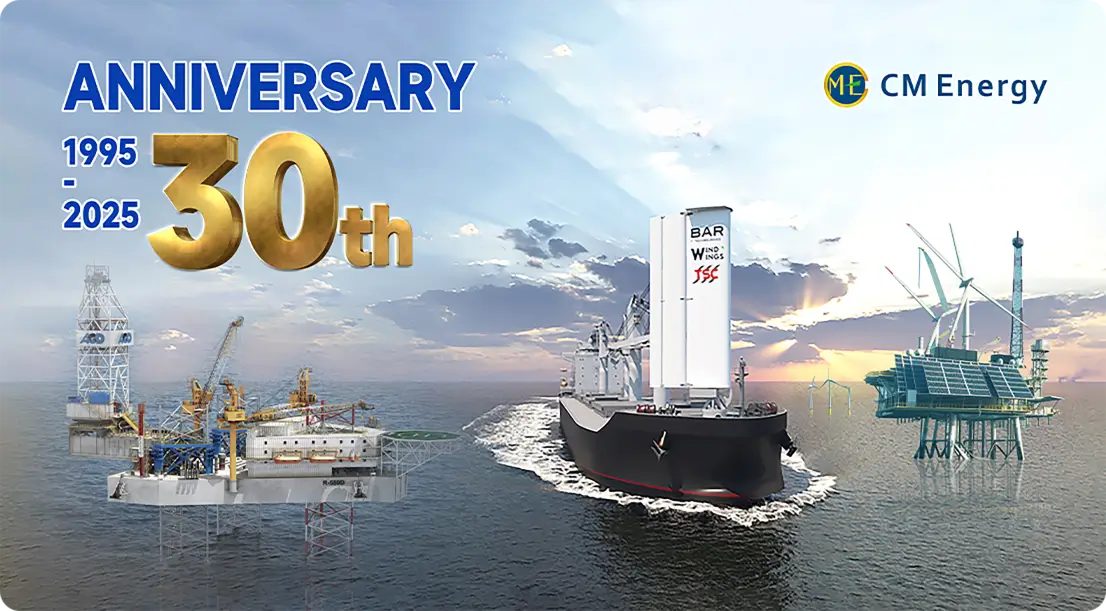Ammonia Fuel Conveyance Network
Overview of the Ammonia Fuel Conveyance Network
The Ammonia Fuel Conveyance Network is composed of several essential components, such as the filling and storage system, the Ammonia Fuel Supply System (AFSS), the Fuel Value Unit (FVU), the venting system, the Ammonia Release Management System (ARMS), the ventilation system, the inert gas mechanism, the engine’s internal ammonia fuel subsystem, and the overarching safety structure. It is crucial to note that significant differences exist between the systems adopted by MAN and those by WinGD.

Why Choose Us?
1. Industry-Leading Expertise – Our extensive experience in designing and constructing dual-fuel ships, liquefied gas carriers, chemical tankers, and their associated systems has firmly established us as a top-tier player in the field.
2. Comprehensive Service Integration – We offer a wide-ranging portfolio that covers Methanol Fuel Supply Systems (MFSS), LNG Fuel Supply Systems (FGSS), Ammonia Fuel Supply Systems (AFSS), and LPG Cargo Handling Systems (CHS), all available through a single, reliable provider.
3. Demonstrated Delivery Excellence – Having completed 19 successful installations of clean fuel supply and cargo handling systems, we have earned a reputation for consistency in quality and dependable performance.
4. Frontline AFSS Development – With in-depth experience in ammonia carrier construction and LPG retrofitting, we independently drive AFSS innovations and actively contribute to zero-carbon technological advancements.
5. Full Lifecycle Assistance – From initial design stages through manufacturing and final deployment, we provide continuous support across the entire lifecycle, including large-scale unit construction and post-delivery maintenance services.
Product Specifications

Product Features
1. Safety and Efficiency Combined – Engineered to deliver both safe and efficient ammonia bunkering and storage, the system complies with IMO standards and accommodates the unique low-flashpoint fuel needs of marine applications.
2. Sophisticated Flow and Safety Control – Equipped with high-precision flow management tools, the system integrates advanced safety elements such as emergency shut-off valves, leak detection systems, and inert gas compatibility to ensure secure operations.
3. Eco-Conscious System Design – To reduce environmental impact, the system incorporates vapor management solutions like re-liquefaction and thermal oxidation, particularly effective in low-pressure storage scenarios.
4. Extensive Ventilation and Risk Mitigation – It ensures effective ventilation across both enclosed and open spaces and applies inert gas technologies to significantly lower the risk of explosions in potentially hazardous zones.
5. Enhanced Pressure Management – Through the use of thermal oxidation, sub-cooling, and re-liquefaction equipment, the Ammonia Fuel Conveyance Network maintains ammonia vapor pressure at safe levels in low-pressure tanks, thereby increasing safety and system reliability.

Installation Process
1. Vessel Design Verification – Begin by thoroughly reviewing the vessel's structural layout and system interface requirements, ensuring that all technical conditions are fully addressed before installation begins.
2. Installation Preparation – Confirm that all necessary tools, equipment, and safety protocols are in place and ready for implementation prior to commencing installation activities.
3. Delivery of Pre-Assembled Modules – Transport the fuel supply system module, which is pre-assembled, to the installation site using appropriate lifting equipment, and position it precisely at the designated mounting point.
4. Module Securing – Properly align and fasten the module base to the ship’s framework, ensuring full stability and compliance with engineering design specifications.
5. Connecting System Interfaces – Establish connections for fuel transfer lines, auxiliary piping, and control cables while carefully checking the integrity and sealing of all electrical systems.
6. Commissioning and Testing – Carry out both individual and integrated system tests to validate the proper functioning of bunkering, fuel delivery, and safety control components.
For more product information about Ammonia Fuel Conveyance Network, please leave a message below.

